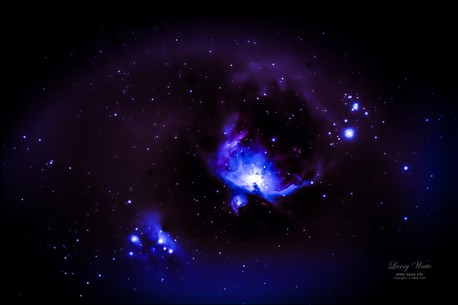Astronomy
Astronomy is a branch of science that studies everything in the universe beyond Earth's atmosphere. That includes objects we can see with our naked eye, like the Sun, moons (including our own), the planets, globular clusters, nebulas and of course the stars. In theory I reckon 'Star Gazing' is another branch of astronomy. 

Cosmology, another branch of science or perhaps a sub section of Astronomy, looks into the origin, development and expansion of the universe.
NASA defines cosmology as "the scientific study of the large scale properties of the universe as a whole".
Cosmologists puzzle over exotic concepts like string theory, dark matter and dark energy and whether there is one universe or many (sometimes called the multiverse).
While other aspects of astronomy deals with individual objects and phenomena or collections of objects, cosmology spans the entire universe from birth to death, with a wealth of mysteries at every stage.
One tradition related to the stars is the Western zodiac, made up of 12 constellations: Aries, Taurus, Gemini, Cancer, Leo, Virgo, Libra, Scorpio, Sagittarius, Capricorn, Aquarius and Pisces. Those constellations are connected to myth and legend, as well as the unscientific concepts of modern astrology.
Astrology: is not a science; there's no evidence that one's zodiac sign actually correlates to personality. But the system has its own sort of logic.
To make out the zodiac shapes in the actual sky, you need a good imagination to spot them. I can't help wonder what drugs the ancients were on when they came up with the constellation characters.
I took the photo recently, although not the sharpest, you can see Omega Centauri, a globular cluster some 17,090 light years from Earth and some 150 light years in diameter. ( a light year is 9.7 trillion kilometers!). United by gravity, Omega Centauri has some 10 million stars!
If you are in a dark sky area in the southern hemisphere and know where to look, you can see this and about 200 other globular clusters with the naked eye! I am told you can see it in the northern hemsiphere as well but it does not appear to rise as high as it does in the southern hemisphere.



